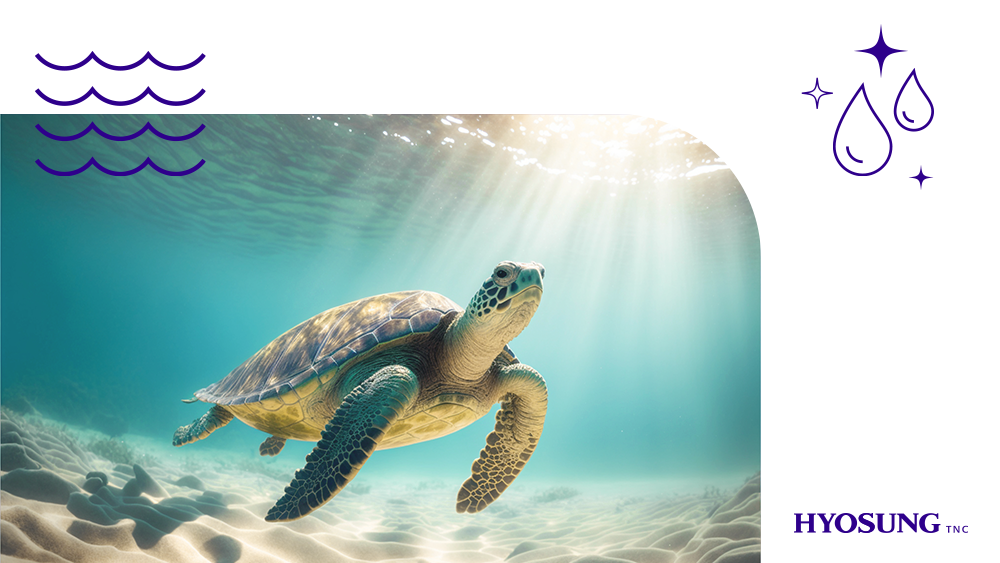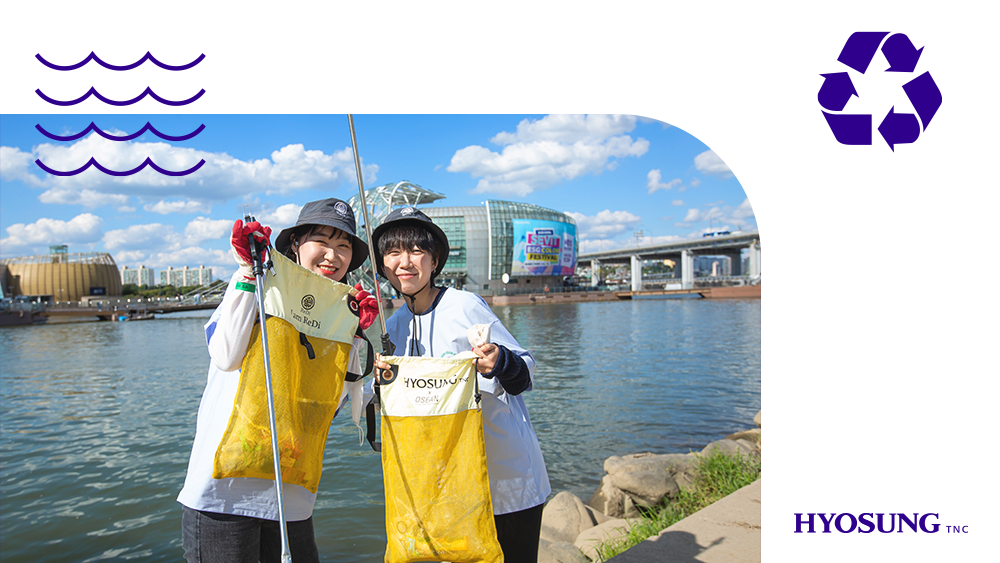Brand Journalism
Brand Journalism
2023-06-30
The meaningful transformation of waste fishing nets, regen Ocean Nylon
“Green marketing, ESG marketing, a good consumption that incorporates environment-friendly aspects, meaning-out consumption”. The above buzzwords are always included in conversations about marketing and consumption trends today. As consumers are more directly experiencing the detrimental effects of climate change, their awareness of and interest in environmental issues have increased. The MZ generation has risen as the main active consumer segment, pursuing an environment-friendly lifestyle and prioritizing consumption habits or activities that minimize the footprint on earth. A growing number of people, including the next generation who believe in the importance of sustainable value consumption for the planet, are bringing about change, leading companies to assume more social and ethical responsibilities. In line with the trend of pursuing value consumption, companies are pursuing ESG management for the sake of the next generation and the environment, while also making substantial investments when it comes to research and development for sustainable growth engines.
Also, an increasing number of people are taking small conscious steps in their daily lives, such as drinking from tumblers, using reusable mugs instead of disposable paper cups, and being less wasteful with consumables, such as food. These individual efforts and small gestures in practice are aggregating into a social trend, with companies also implementing sustainable management.
What could be another example of this trend of behaving with a more environmentally conscious mindset? Clothing is one example. We wear it every day and it is indispensable in our lives. An increasing number of consumers are checking to make sure the fabrics used in articles of clothing are environment-friendly before purchasing them. How and where can we purchase clothing made from environment-friendly fabrics so as to contribute in a small way to environmental protection? We at Hyosung TNC can teach you how it’s possible.
Waste fishing nets that threaten the marine ecosystem are recycled and made into environment-friendly fiber. In 2007, Hyosung became the world’s first company to succeed in commercializing the technology for making environment-friendly fiber from fishing nets that otherwise would have added to the destruction of the marine ecosystem. Back in 2007, environmental issues were not a top priority in people's minds but Hyosung was already at the forefront of developing environment-friendly products for the future generation. This is how Hyosung successfully launched the regen Ocean Nylon in the global market. Today the fashion industry has emerged as a strong advocate of the environment, and Hyosung has become a company celebrated by the industry for its environment-friendly products.
Global fashion brands have taken heed of the growing consumer interest in ‘meaning-out consumption’ and the environment, and in response, they have announced plans to use eco-materials, including recycled materials. In the future, more apparel brands will switch to environment-friendly materials, with the recycle markets and upcycle markets both forecasted to expand. The pro-environmental shift gaining traction in the fashion industry is about to go mainstream in full scale.

In 2007, Hyosung TNC became the first company in the world to commercialize high-quality nylon made from discarded fishing nets. The fact that it is an environment-friendly yarn is impressive enough, but the quality of regen Ocean Nylon is also outstanding. Just how do waste fishing nets become Hyosung’s recycled nylon of the highest quality?
Recycled nylon is made by flattening out the collected waste fishing net, cutting them into little pieces, washing them thoroughly to remove any impurities, and then restoring them into recycled nylon pieces. To set up a stable process for recycling this resource in South Korea, Hyosung TNC entered into a business partnership with Busan City and NETSPA and is presently producing regen Ocean Nylon by recycling discarded fishing nets. Busan has collaborated with local governments to establish a system for sorting out reusable fishing nets. While NETSPA is tasked with shredding and washing the sorted fishing nets, Hyosung takes over the highly sensitive and difficult process of depolymerization to produce the regen Ocean Nylon.
Exemplary definition of virtuous recycling: a culprit of ocean pollution is now being used to clean up the ocean.
If you want to reduce ocean trash and protect the marine ecosystem, remember regen Ocean Nylon, the high-quality recycled nylon brand from Hyosung. Wearing clothes made from eco-friendly recycled nylon that substitutes traditional nylon can be your first step for reducing carbon emissions.
Recycled nylon is more effective in protecting the environment because 1 kg of recycled nylon fiber can reduce 6.7 kg of CO2 which is well-known as a major greenhouse gas. However, Hyosung will not settle for just being a producer of recycled nylon. It is taking further steps by implementing and executing measures designed to protect the environment. It not only sponsors ocean cleanup activities of ocean conservation groups like ReDi and Ocean Care, but also produces lift bags, buoys, and collection nets made with Hyosung’s ocean-friendly recycled yarn (while also providing customer support). Hyosung and ReDi jointly held a plogging (a portmanteau of "plockupp" in Swedish meaning "pick up the grains" and "jogging" which blend to denote the act of picking up trash while jogging) event on the banks of the Hangang River, as part of Hyosung’s Sevit ESG Color Festival's environmental cleanup program. This is just one example of how Hyosung is venturing beyond just producing recycled nylon and actively supporting various ocean cleanup activities. As a producer of recycled environment-friendly fibers, the company is at the vanguard of the environmental movement. At the same time, Hyosung is also spreading the culture of green diving through environment conservation groups, to actively support the ocean cleanup efforts nationwide. These efforts show Hyosung’s devotion to the mission of environmental protection.
Hyosung's environmental activities do not end here because the company announced that it is set to sponsor apparel made with OBP-certified recycled yarn at the International Marine Debris Conference, further showing the company's commitment to resolving marine environmental issues. This is why we are more excited about the milestones that will be set in the coming years by Hyosung in the arena of marine environmental protection.
Through the process of developing and manufacturing recycled nylon, Hyosung is protecting the environment, while also exploring diverse approaches to making the oceans a lot cleaner for the next generation. Plastic and marine pollution are serious issues that are not far removed from us. Insofar as Hyosung is exerting voluntary efforts to safeguard the environment for our children’s future through continuous research and investments, shouldn’t everyone play a small role in our daily lives for the environment? To make sure the future generation will be able to live on a cleaner planet that does not get more polluted, Hyosung will relentlessly pursue its sustainable development of materials, with the aim of developing and researching materials for the next generation to create a sustainable future for them. In addition to sustainable material development, Hyosung, through its ESG brand RE:GEN, intends to earnestly fulfill its responsibilities as a company for the sake of nature, for the planet, and for the future of everyone inhabiting it. It is up to us to create a future where people, Earth, and all living organisms can coexist and all the possibilities on Earth will bear fruit only if we act together for the common good. To endow the future of the world we dream about to the next generation, we at Hyosung will stay committed to its promises and fulfill them.